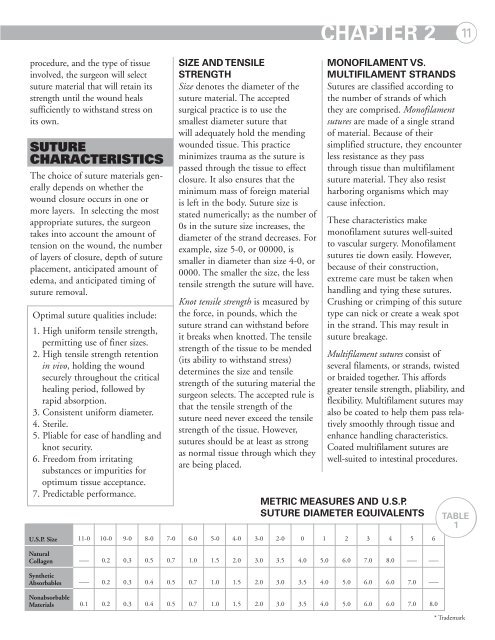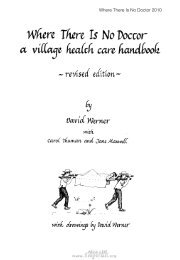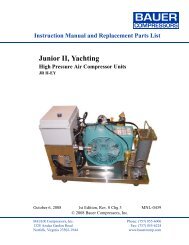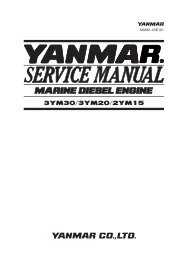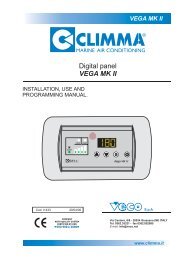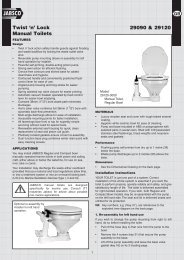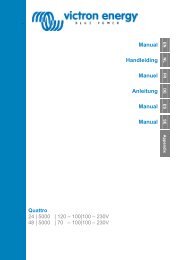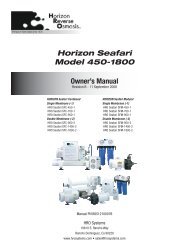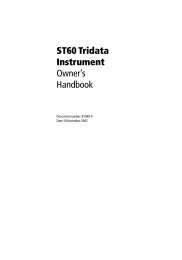Wound Closure Manual (PDF) - Penn Medicine
Wound Closure Manual (PDF) - Penn Medicine
Wound Closure Manual (PDF) - Penn Medicine
Create successful ePaper yourself
Turn your PDF publications into a flip-book with our unique Google optimized e-Paper software.
procedure, and the type of tissue<br />
involved, the surgeon will select<br />
suture material that will retain its<br />
strength until the wound heals<br />
sufficiently to withstand stress on<br />
its own.<br />
SUTURE<br />
CHARACTERISTICS<br />
The choice of suture materials generally<br />
depends on whether the<br />
wound closure occurs in one or<br />
more layers. In selecting the most<br />
appropriate sutures, the surgeon<br />
takes into account the amount of<br />
tension on the wound, the number<br />
of layers of closure, depth of suture<br />
placement, anticipated amount of<br />
edema, and anticipated timing of<br />
suture removal.<br />
Optimal suture qualities include:<br />
1. High uniform tensile strength,<br />
permitting use of finer sizes.<br />
2. High tensile strength retention<br />
in vivo, holding the wound<br />
securely throughout the critical<br />
healing period, followed by<br />
rapid absorption.<br />
3. Consistent uniform diameter.<br />
4. Sterile.<br />
5. Pliable for ease of handling and<br />
knot security.<br />
6. Freedom from irritating<br />
substances or impurities for<br />
optimum tissue acceptance.<br />
7. Predictable performance.<br />
U.S.P. Size<br />
11-0<br />
10-0<br />
9-0<br />
8-0<br />
7-0<br />
SIZE AND TENSILE<br />
STRENGTH<br />
Size denotes the diameter of the<br />
suture material. The accepted<br />
surgical practice is to use the<br />
smallest diameter suture that<br />
will adequately hold the mending<br />
wounded tissue. This practice<br />
minimizes trauma as the suture is<br />
passed through the tissue to effect<br />
closure. It also ensures that the<br />
minimum mass of foreign material<br />
is left in the body. Suture size is<br />
stated numerically; as the number of<br />
0s in the suture size increases, the<br />
diameter of the strand decreases. For<br />
example, size 5-0, or 00000, is<br />
smaller in diameter than size 4-0, or<br />
0000. The smaller the size, the less<br />
tensile strength the suture will have.<br />
Knot tensile strength is measured by<br />
the force, in pounds, which the<br />
suture strand can withstand before<br />
it breaks when knotted. The tensile<br />
strength of the tissue to be mended<br />
(its ability to withstand stress)<br />
determines the size and tensile<br />
strength of the suturing material the<br />
surgeon selects. The accepted rule is<br />
that the tensile strength of the<br />
suture need never exceed the tensile<br />
strength of the tissue. However,<br />
sutures should be at least as strong<br />
as normal tissue through which they<br />
are being placed.<br />
6-0<br />
5-0<br />
4-0<br />
CHAPTER 2 11<br />
MONOFILAMENT VS.<br />
MULTIFILAMENT STRANDS<br />
Sutures are classified according to<br />
the number of strands of which<br />
they are comprised. Monofilament<br />
sutures are made of a single strand<br />
of material. Because of their<br />
simplified structure, they encounter<br />
less resistance as they pass<br />
through tissue than multifilament<br />
suture material. They also resist<br />
harboring organisms which may<br />
cause infection.<br />
These characteristics make<br />
monofilament sutures well-suited<br />
to vascular surgery. Monofilament<br />
sutures tie down easily. However,<br />
because of their construction,<br />
extreme care must be taken when<br />
handling and tying these sutures.<br />
Crushing or crimping of this suture<br />
type can nick or create a weak spot<br />
in the strand. This may result in<br />
suture breakage.<br />
Multifilament sutures consist of<br />
several filaments, or strands, twisted<br />
or braided together. This affords<br />
greater tensile strength, pliability, and<br />
flexibility. Multifilament sutures may<br />
also be coated to help them pass relatively<br />
smoothly through tissue and<br />
enhance handling characteristics.<br />
Coated multifilament sutures are<br />
well-suited to intestinal procedures.<br />
METRIC MEASURES AND U.S.P.<br />
SUTURE DIAMETER EQUIVALENTS<br />
3-0<br />
2-0<br />
0<br />
1<br />
2<br />
3<br />
4<br />
5<br />
6<br />
TABLE<br />
1<br />
Natural<br />
Collagen<br />
–––<br />
0.2<br />
0.3<br />
0.5<br />
0.7<br />
1.0<br />
1.5<br />
2.0<br />
3.0<br />
3.5<br />
4.0<br />
5.0<br />
6.0<br />
7.0<br />
8.0<br />
–––<br />
–––<br />
Synthetic<br />
Absorbables<br />
–––<br />
0.2<br />
0.3<br />
0.4<br />
0.5<br />
0.7<br />
1.0<br />
1.5<br />
2.0<br />
3.0<br />
3.5<br />
4.0<br />
5.0<br />
6.0<br />
6.0<br />
7.0<br />
–––<br />
Nonabsorbable<br />
Materials<br />
0.1<br />
0.2<br />
0.3<br />
0.4<br />
0.5<br />
0.7<br />
1.0<br />
1.5<br />
2.0<br />
3.0<br />
3.5<br />
4.0<br />
5.0<br />
6.0<br />
6.0<br />
7.0<br />
8.0<br />
* Trademark


